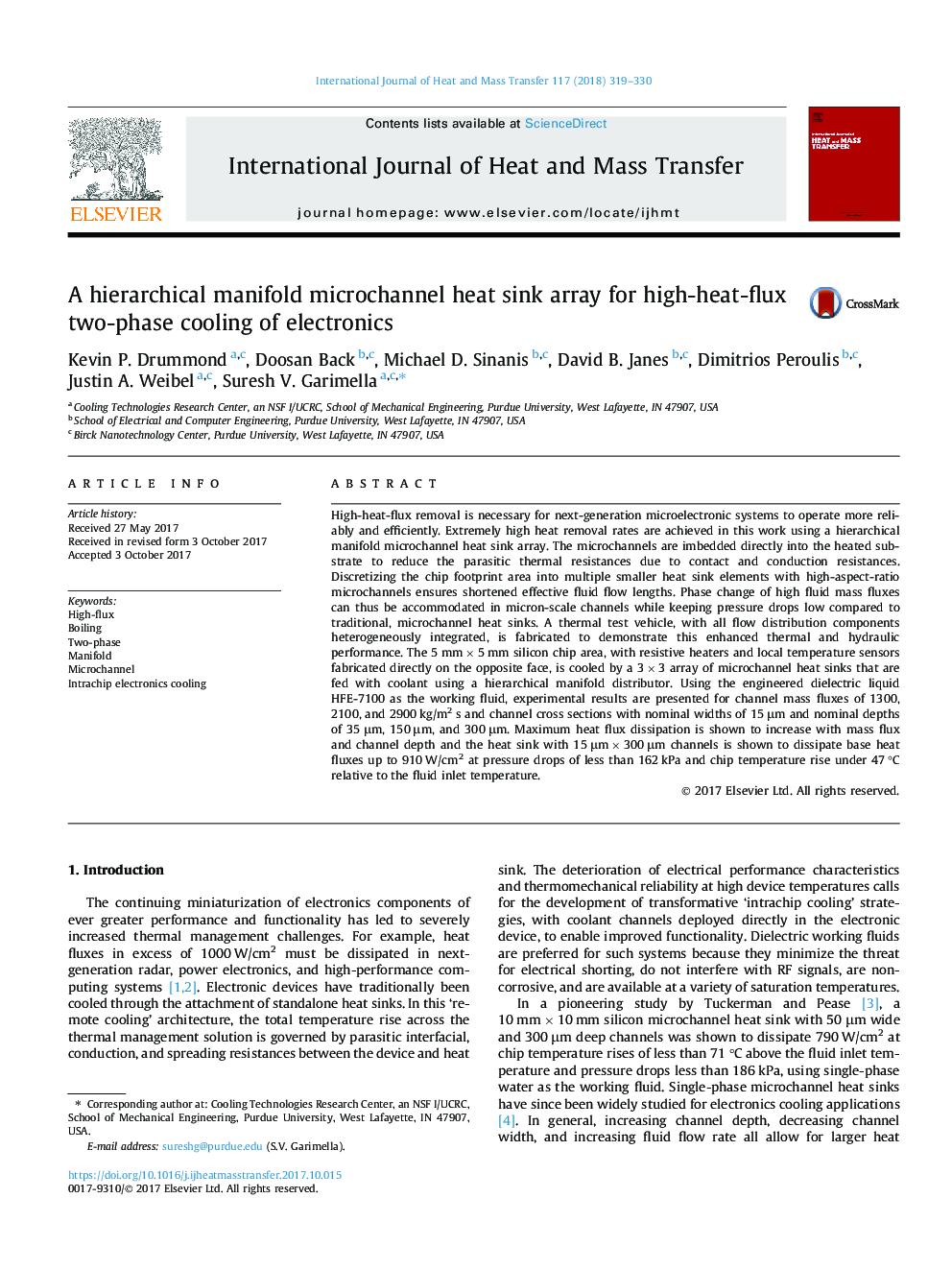| Article ID | Journal | Published Year | Pages | File Type |
|---|---|---|---|---|
| 4993403 | International Journal of Heat and Mass Transfer | 2018 | 12 Pages |
Abstract
High-heat-flux removal is necessary for next-generation microelectronic systems to operate more reliably and efficiently. Extremely high heat removal rates are achieved in this work using a hierarchical manifold microchannel heat sink array. The microchannels are imbedded directly into the heated substrate to reduce the parasitic thermal resistances due to contact and conduction resistances. Discretizing the chip footprint area into multiple smaller heat sink elements with high-aspect-ratio microchannels ensures shortened effective fluid flow lengths. Phase change of high fluid mass fluxes can thus be accommodated in micron-scale channels while keeping pressure drops low compared to traditional, microchannel heat sinks. A thermal test vehicle, with all flow distribution components heterogeneously integrated, is fabricated to demonstrate this enhanced thermal and hydraulic performance. The 5 mm Ã 5 mm silicon chip area, with resistive heaters and local temperature sensors fabricated directly on the opposite face, is cooled by a 3 Ã 3 array of microchannel heat sinks that are fed with coolant using a hierarchical manifold distributor. Using the engineered dielectric liquid HFE-7100 as the working fluid, experimental results are presented for channel mass fluxes of 1300, 2100, and 2900 kg/m2 s and channel cross sections with nominal widths of 15 μm and nominal depths of 35 μm, 150 μm, and 300 μm. Maximum heat flux dissipation is shown to increase with mass flux and channel depth and the heat sink with 15 μm Ã 300 μm channels is shown to dissipate base heat fluxes up to 910 W/cm2 at pressure drops of less than 162 kPa and chip temperature rise under 47 °C relative to the fluid inlet temperature.
Related Topics
Physical Sciences and Engineering
Chemical Engineering
Fluid Flow and Transfer Processes
Authors
Kevin P. Drummond, Doosan Back, Michael D. Sinanis, David B. Janes, Dimitrios Peroulis, Justin A. Weibel, Suresh V. Garimella,
